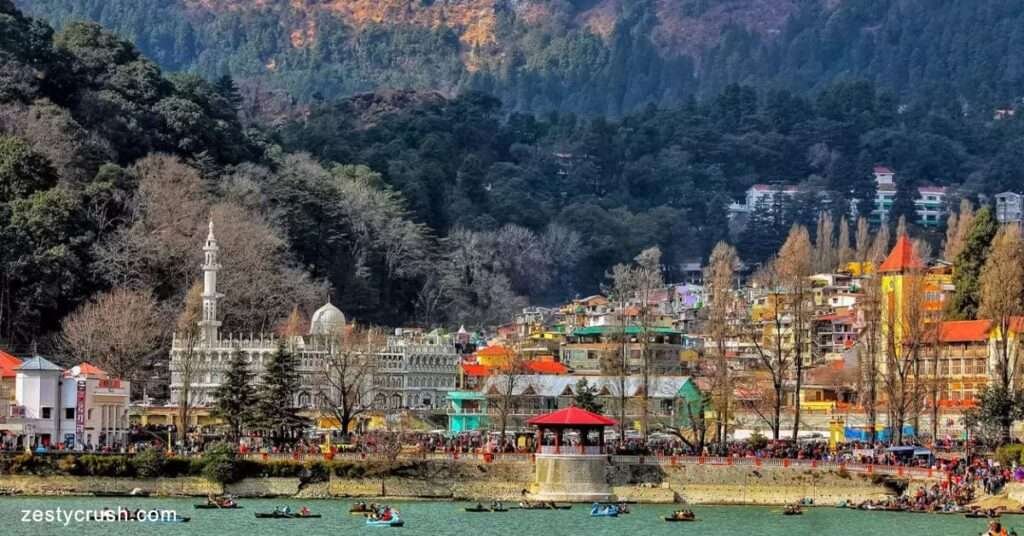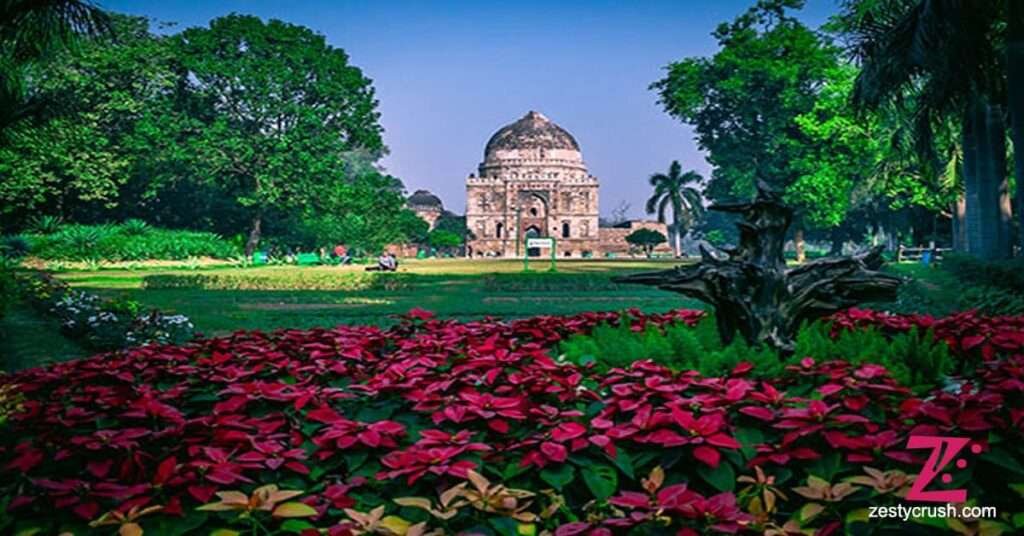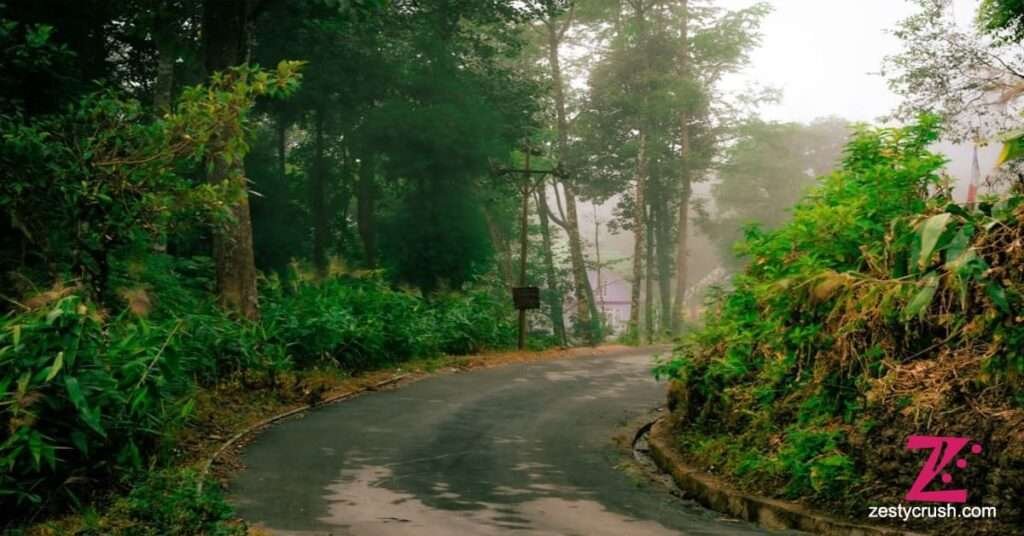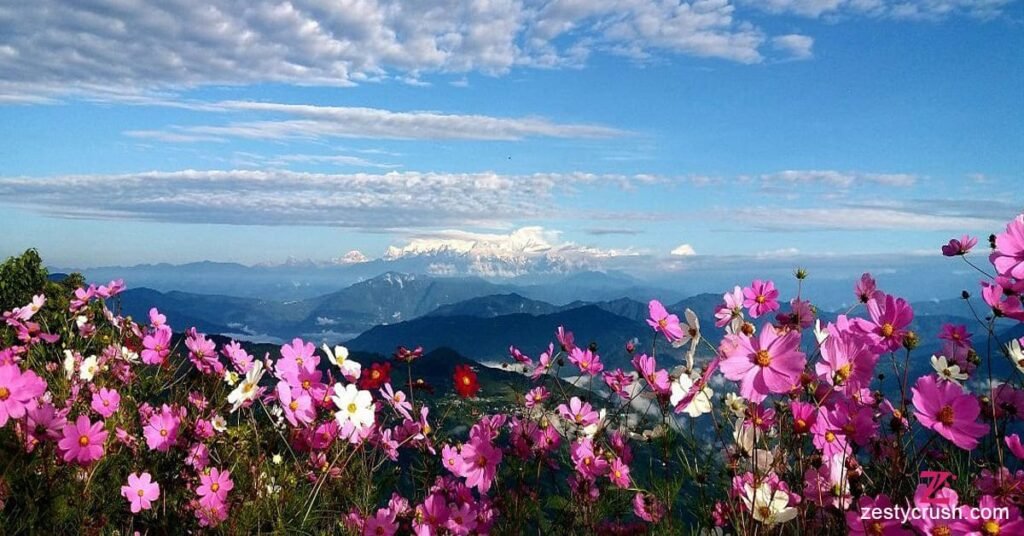Beas Kund Trek: Best Time, Tips, and Itinerary Inside
If you are looking for a magical trekking experience surrounded by breathtaking Himalayan landscapes then the Beas Kund Trek should be at the top of your bucket list. Beas Kund is located in Himachal Pradesh near Manali. Beas Kund trek offers everything from lush meadows and sparkling rivers to the serene Beas Kund lake which is the beas river starting point.
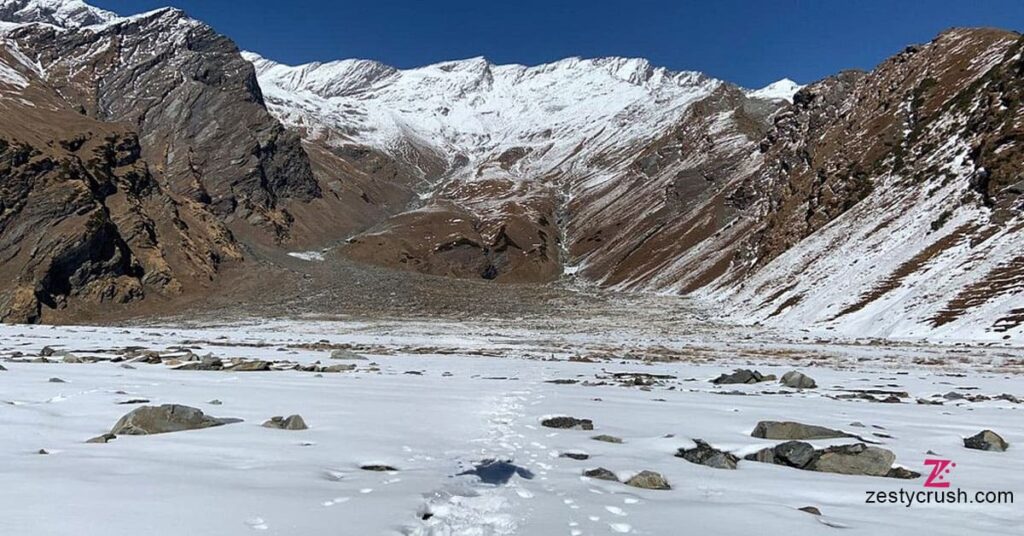
This guide will provide a step-by-step breakdown on how to reach Manali from Delhi, where to stay, the best time to visit, weather details, a detailed 3-day itinerary, and essential packing tips. Let’s dive right in!
Discover the magic of the Beas Kund Trek an easy-to-moderate 3-day Himalayan adventure near Manali. The trek offers breathtaking views of the Pir Panjal range, lush meadows and ends at Beas Kund, a serene glacial lake and the beas river starting point. You will journey through iconic spots like Solang Valley, Dhundi and Bakarthach experiencing vibrant landscapes and alpine beauty along the way. The trek is best done between March to May or September to November for clear skies and pleasant weather. It is beginner-friendly with manageable distances and moderate trails. Pack essentials like warm clothing, trekking shoes and a first-aid kit. For accommodations Manali offers options ranging from luxury resorts to budget-friendly hostels. Plan your trek now and experience one of Himachal Pradesh’s most enchanting trails that combines nature, mythology and adventure in perfect harmony.
How to Reach Manali from Delhi
Manali is the gateway to the Beas Kund Trek and well-connected to Delhi via various transportation modes. Here is how you can plan your trip:
1. By Air
- Closest Airport: Bhuntar Airport (Kullu-Manali Airport) which is located 50 km from Manali.
- Flights: Regular flights operate from Delhi to Bhuntar. Airlines like IndiGo and SpiceJet service this route.
- Travel Time: Approximately 1.5 hours.
- Cost: ₹3,000–₹7,000 (depending on the season).
- From Bhuntar to Manali: Take a taxi or local bus (₹1,000–₹1,500 for a taxi).
2. By Bus
- Types of Buses:
- Ordinary (HRTC), Semi-sleeper, and Luxury Volvo buses.
- Travel Time: 12–14 hours.
- Cost: ₹800–₹1,800 (Volvo).
- Starting Point in Delhi: ISBT Kashmere Gate or Majnu Ka Tila.
- Tips: Opt for an overnight journey to save time.
3. By Train
- Nearest Railway Station: Joginder Nagar (163 km from Manali).
- Delhi to Joginder Nagar: Board a train to Chandigarh or Pathankot, and then take a connecting train to Joginder Nagar.
- Further Travel: Take a taxi or bus to Manali (₹3,000–₹5,000).
- Drawback: This option is time-consuming and less convenient.
4. By Car or Taxi
- Route: Delhi → Chandigarh → Mandi → Kullu → Manali (via NH3).
- Distance: 517 km.
- Travel Time: 12–14 hours.
- Cost: ₹6,000–₹10,000 for a private taxi.
- Tips: This option is ideal for groups or families. Make pit stops at Kullu for scenic views.
Where to Stay in Manali
Manali offers accommodation options for all budgets, whether you are seeking luxury or a cozy budget stay.
Luxury Hotels
- The Himalayan
- Price: ₹8,000–₹15,000/night.
- Features: Victorian-style architecture, heated swimming pool, and spa.
- Span Resort and Spa
- Price: ₹12,000–₹20,000/night.
- Features: Riverside location, world-class amenities, and lush gardens.
- Manu Allaya Resort
- Price: ₹10,000–₹18,000/night.
- Features: Mountain views, multi-cuisine dining, and luxurious rooms.
Budget Options
- Zostel Manali
- Price: ₹500–₹1,500/night (dormitory and private rooms).
- Features: Vibrant vibe, shared kitchen, and stunning views.
- Old Manali Hostel
- Price: ₹400–₹1,000/night.
- Features: Backpacker-friendly, free Wi-Fi, and close to cafes.
- Hotel Greenfields
- Price: ₹1,500–₹3,000/night.
- Features: Comfortable rooms, central location, and great service.
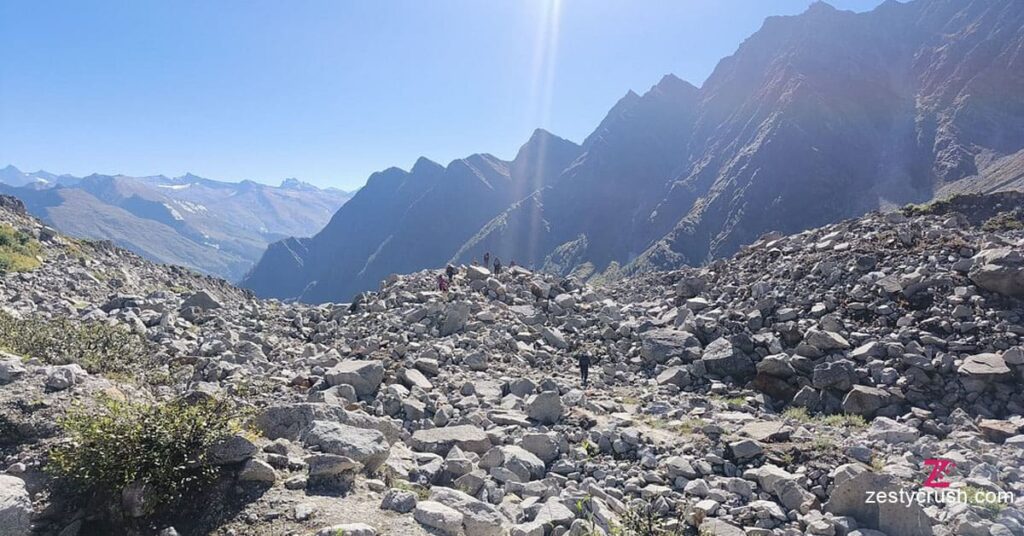
Beas Kund Trek Best Time to Visit
The Beas Kund Trek best time to visit depends on the season. Here is a month-wise breakdown to help you plan:
March–May (Spring to Early Summer)
- Weather: Pleasant; snow in higher altitudes.
- Temperature: 5°C–15°C.
- Highlights: Blooming flowers, lush greenery, and ideal trekking conditions.
June–August (Monsoon)
- Weather: Rainy and slippery trails.
- Temperature: 10°C–20°C.
- Highlights: Risk of landslides but vibrant green landscapes.
September–November (Autumn)
- Weather: Crisp and clear skies.
- Temperature: 2°C–10°C.
- Highlights: Peak trekking season, perfect weather.
December–February (Winter)
- Weather: Heavy snowfall; trails may close.
- Temperature: -5°C–5°C.
- Highlights: For snow enthusiasts, limited accessibility.
Beas Kund Weather and Temperature
DHUNDI WEATHERThe Beas Kund weather and temperature fluctuates significantly based on the season and altitude.
| Season | Temperature Range | Weather |
| Spring (Mar-May) | 5°C–15°C | Moderate and pleasant |
| Summer (Jun-Aug) | 10°C–20°C | Warm with showers |
| Autumn (Sep-Nov) | 2°C–10°C | Clear and chilly |
| Winter (Dec-Feb) | -5°C–5°C | Snowy and freezing |
A Journey Through the Beas Kund Trek: Detailed 3-Day Itinerary
If you are an adventure enthusiast then the Beas Kund Trek is your chance to escape the mundane and immerse yourself in nature’s raw beauty. Imagine waking up to the fresh mountain air, trekking through lush alpine meadows, and encountering the majestic peaks of the Pir Panjal range, all culminating at the pristine Beas Kund the source of the Beas River.
This meticulously planned 3-day itinerary will not only guide you step-by-step but also ensure that you soak in every ounce of the trek’s charm. From altitude details to trail types and hidden gems along the route, let’s set off on this incredible journey!
Here’s a detailed itinerary to help you experience the Beas Kund Trek distance of 16 km at its best.
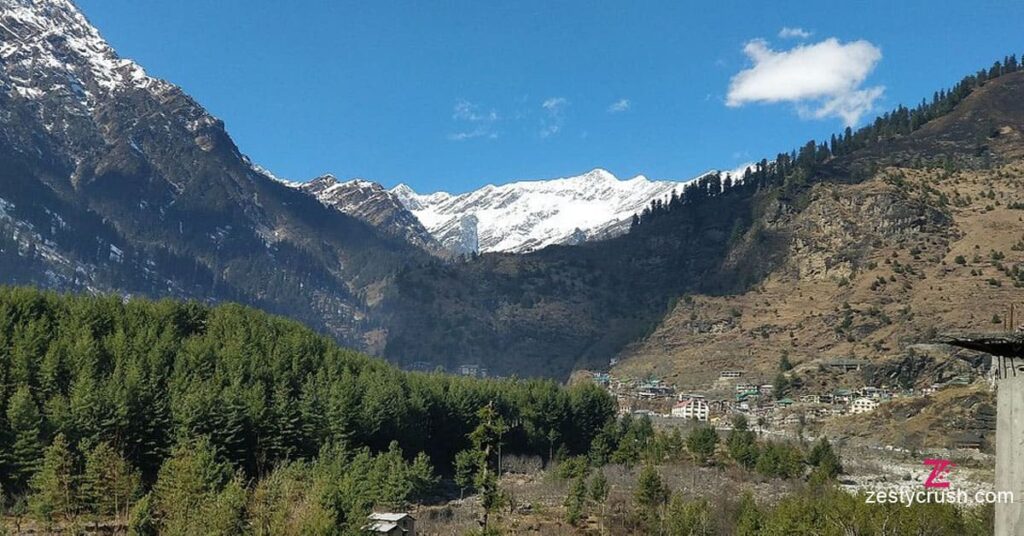
Day 1: Drive from Manali to Solang Valley and Trek to Dhundi
- Altitude: 2,050m → 3,150m.
- Distance: 20 km (drive) + 4 km (trek).
- Trail Type: Gradual ascent.
- Difficulty: Easy.
- Time: 2–3 hours trek.
- Water Source: Nearby streams.
- Highlights: Solang Valley, Dhundi views, and riverside camping.
Morning Adventure: Setting Off from Manali
Your adventure begins with a short drive from Manali to Solang Valley which is a bustling hub for adventure activities like paragliding and skiing. The drive itself is a visual treat with the vibrant beas map (Beas River flowing beside) and pine-clad slopes keeping you company.
At Solang Valley the air brims with excitement. As you start trekking the bustle fades replaced by the soothing hum of the Beas Kund river, which flows tirelessly beside the trail.
Trek Highlights: Solang to Dhundi
The trail to Dhundi which is located at 3,150m is relatively easy making it perfect for beginners. You will pass through lush green meadows dotted with grazing sheep surrounded by dense pine forests. The views of snow-capped peaks in the distance—including Hanuman Tibba standing tall at 5,982m—are jaw-dropping.
Dhundi is a tiny hamlet and serves as the Bakarthach ABVIMAS base camp offering a serene camping spot by the riverbank. Watch the sun dip below the horizon as the sky turns into a canvas of fiery hues and the first stars appear—a perfect way to end your day.
Day 2: Dhundi to Bakarthach
- Altitude: 3,150m → 3,640m.
- Distance: 6 km (trek).
- Trail Type: Steep and rocky.
- Difficulty: Moderate.
- Time: 4–5 hours trek.
- Water Source: Glacier-fed streams.
- Highlights: Alpine meadows and views of the mighty Hanuman Tibba.
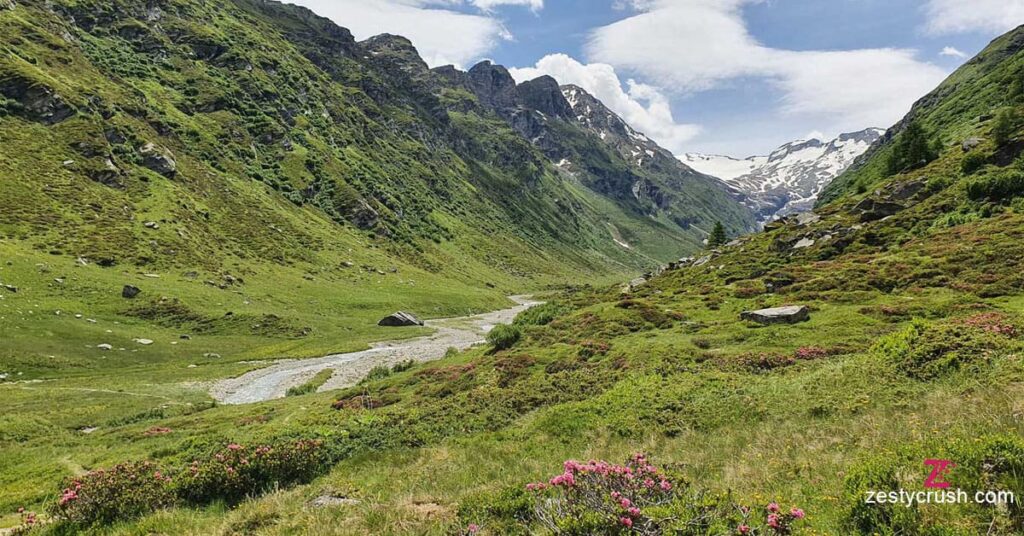
Morning Bliss: Trekking Through Alpine Meadows
Day 2 begins with a hearty breakfast fueling you for the ascent to Bakarthach (meaning “shepherd’s field”). The trail grows steeper with rocky patches that demand caution. Don’t worry—your efforts will be rewarded with stunning panoramas of the towering peaks such as Friendship Peak and Deo Tibba.
Hidden Gems Along the Way
As you trek you will come across bubbling streams of glacial meltwater—nature’s purest form of hydration. Stop for a moment to splash your face or refill your water bottle; it’s both refreshing and therapeutic. You will also spot colorful wildflowers, adding splashes of color to the rugged terrain.
Camping at Bakarthach
Bakarthach situated at 3,640m height is like a hidden jewel in the Himalayas. The campsite is surrounded by sprawling alpine meadows where shepherds graze their flocks. This spot offers panoramic views of some of the region’s most iconic peaks. As night falls the temperature drops significantly but the sight of a starlit sky will leave you spellbound.
Day 3: Trek to Beas Kund and Return to Bakarthach/Dhundi
- Altitude: 3,640m → 3,700m.
- Distance: 6 km (trek).
- Trail Type: Gradual ascent.
- Difficulty: Moderate.
- Time: 6–7 hours (round trip).
- Highlights: Beas Kund, the river originates from Beas Kund, and panoramic Himalayan views.
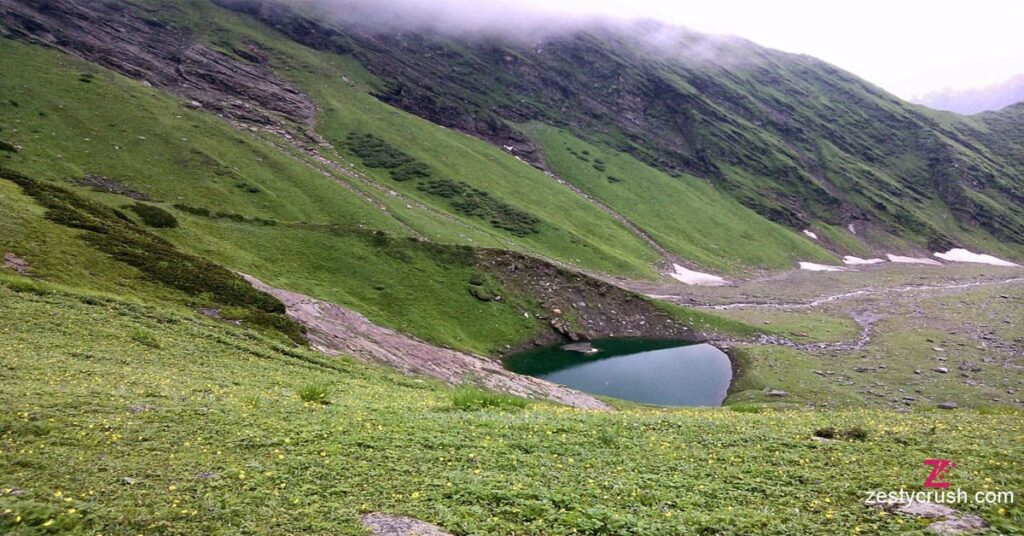
The Final Ascent: Journey to Beas Kund
The last stretch of your trek leads you to the ethereal Beas Kund the sacred river originating from Beas Kund. The trail is more challenging with some steep ascents and uneven terrain but the breathtaking scenery keeps your spirits high.
As you approach the lake the landscape transforms—snow blankets the ground and the stillness in the air is almost spiritual. The lake itself is a shimmering blue gem situated at the base of imposing peaks like Shitidhar and Friendship Peak. According to legend this is where Sage Vyas meditated giving the river its name.
Moments at Beas Kund
Sit by the lake and let the serenity wash over you. The reflection of the surrounding peaks on the calm waters creates an unforgettable image—one that will remain etched in your memory forever.
Return Journey: Beas Kund to Dhundi
After soaking in the tranquility of Beas Kund retrace your steps back to Bakarthach and then further to Dhundi depending on your stamina and preferences. The descent feels quicker but the memories linger.
Celebrate your achievement with your trekking companions, sharing stories around a cozy campfire before heading back to civilization.
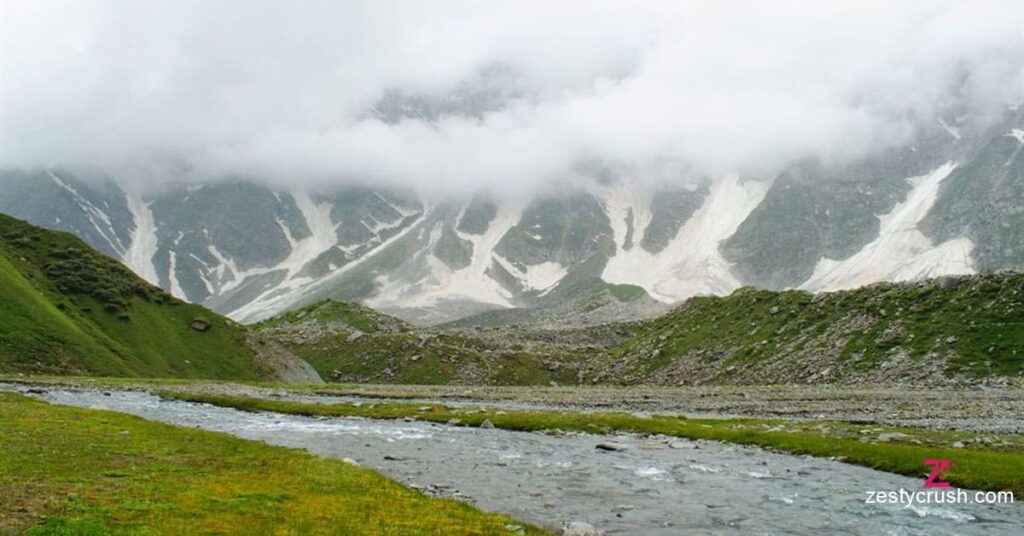
Pro Tips to Enhance Your Beas Kund Trek Adventure
- Acclimatization is Key:
- Spend a day in Manali to acclimatize before starting the trek.
- Plan Your Return Journey:
- If time allows, spend an extra night in Solang Valley to relax and indulge in adventure sports like paragliding.
- Stay Hydrated:
- Carry a reusable water bottle and purifying tablets to stay hydrated from natural water sources along the trail.
- Capture the Magic:
- Bring a good camera or smartphone to capture the beauty of the beas river starting point, Dhundi, and Beas Kund.
Essential Packing List for the Trek
Packing smartly ensures a safe and enjoyable trekking experience. Here’s your checklist:
Essential Items
- Trekking shoes with good grip.
- Waterproof backpack with rain cover.
- Insulated jacket and thermal wear.
- Woolen socks, gloves, and beanie.
Trekking Gear
- Trekking poles.
- Sleeping bag and mat.
- Headlamp with extra batteries.
Food and Water
- High-energy snacks (dry fruits, protein bars).
- Water bottle or hydration pack.
- Water purification tablets.
Miscellaneous
- First aid kit.
- Sunscreen and lip balm.
- ID proof and permits.
Conclusion
The Beas Kund Trek is a mesmerizing journey into the heart of the Himalayas perfect for both beginners and experienced trekkers. From exploring the beas river starting point to witnessing snow-capped peaks this adventure promises unforgettable memories. With proper planning, the right gear and a bit of wanderlust you are all set to embark on this epic trek.
FAQ
What is the Beas Kund Trek distance?
The trek covers approximately 16 km over 3 days, making it suitable for beginners and moderate trekkers.
What is the Beas Kund temperature during the trek?
The temperature ranges from -5°C in winter to 20°C in summer, varying based on the season and altitude.
Can Beas Kund Trek be completed as a one-day trek in Manali?
While it’s possible to visit Dhundi or Solang Valley as a day trip, the entire Beas Kund Trek requires 3 days.
What is the difficulty level of the Beas Kund Trek?
The trek is categorized as easy to moderate, with well-marked trails and gradual ascents.
Why is Beas Kund famous?
Beas Kund is the source of the Vyas River (Beas River) and holds mythological significance, believed to be where Sage Vyas meditated.

